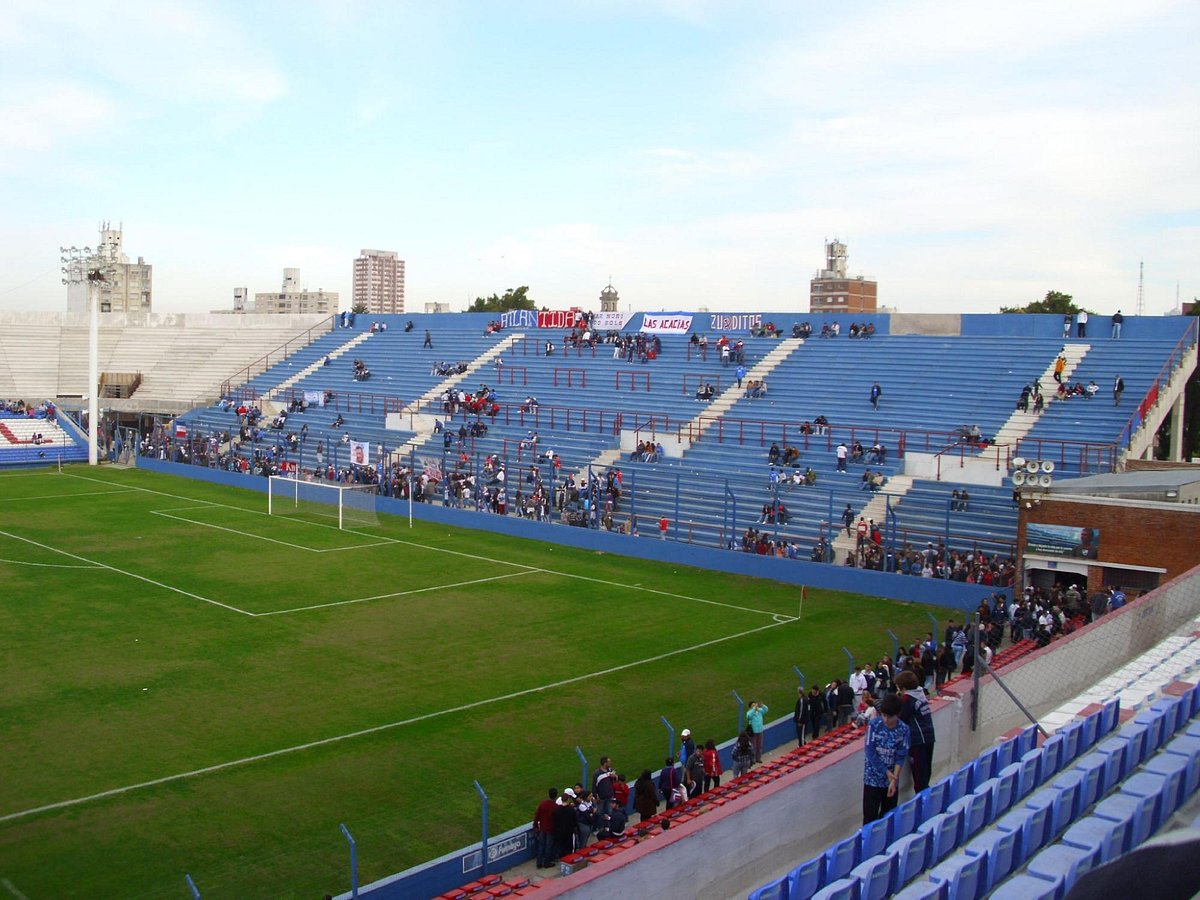
Estadio Gran Parque Central, located in Montevideo, Uruguay, is a legendary landmark that holds a rich history and many fascinating facts. This iconic stadium, often referred to as “The Cathedral of Uruguayan Football,” is the home of Club Nacional de Football, one of the most successful soccer teams in South America.
With a capacity of over 27,000 spectators, Estadio Gran Parque Central has witnessed countless historical moments and hosted some of the most thrilling matches in soccer history. As a true symbol of national pride, the stadium has become an integral part of Uruguay’s cultural heritage and a must-visit destination for soccer enthusiasts from around the world.
In this article, we’ll delve into 11 astounding facts about Estadio Gran Parque Central that highlight its significance, architectural marvels, and legendary performances. From its construction to the passionate fanbase, there is much to explore about this iconic landmark.
Key Takeaways:
- Estadio Gran Parque Central is the oldest stadium in South America, hosting legendary players and historic matches, making it a must-visit for football enthusiasts and fans of Club Nacional de Football.
- With a capacity of over 27,000 spectators, the stadium’s unique design and rich football history make it a symbol of Uruguay’s passion for the beautiful game.
The oldest stadium in South America
Estadio Gran Parque Central holds the prestigious title of being the oldest stadium in South America. It was inaugurated on May 25, 1900, and has since become an iconic landmark in Montevideo, Uruguay.
Home to Club Nacional de Football
Estadio Gran Parque Central proudly serves as the home stadium for Club Nacional de Football, one of the most successful and popular football clubs in Uruguay. The historic stadium has been witness to numerous triumphs and memorable moments for the team and its passionate fans.
Capacity of over 27,000 spectators
This grand stadium has a seating capacity of over 27,000 spectators, ensuring an unforgettable atmosphere during matches. The passionate fans fill the stands, creating an electric atmosphere that adds to the intensity of the game.
Hosted the first-ever World Cup match
Estadio Gran Parque Central holds a significant place in football history as it hosted the first-ever World Cup match on July 13, The match between France and Mexico marked the beginning of the prestigious tournament and set the stage for the glorious history of the World Cup.
Witnessed legendary football players
Throughout its rich history, Estadio Gran Parque Central has been graced by the presence of legendary football players. From iconic Uruguayan stars like Alcides Ghiggia and Juan Alberto Schiaffino to international superstars like Lionel Messi and Cristiano Ronaldo, this stadium has seen some of the greatest talents showcasing their skills on its hallowed turf.
Unique horseshoe-shaped design
One of the distinctive features of Estadio Gran Parque Central is its horseshoe-shaped design. This architectural marvel adds to the charm and character of the stadium, creating a visually stunning backdrop for football matches.
Exclusive museum showcasing football history
Estadio Gran Parque Central houses an exclusive museum that showcases the rich football history of Uruguay and Club Nacional de Football. Visitors can explore memorabilia, trophies, and photographs that highlight the glorious moments and achievements of the team and its players.
Home to the infamous “Knights of the Red Table”
Estadio Gran Parque Central is known as the home of the infamous “Knights of the Red Table” (Caballeros de la Mesa Redonda). This group of passionate Nacional fans gathers at the stadium to discuss and debate the team, strategies, and historical moments, adding to the vibrant football culture surrounding the stadium.
Renovated to meet FIFA standards
Over the years, Estadio Gran Parque Central has undergone several renovations to meet the modern standards set by FIFA. These upgrades ensure the comfort and safety of both the players and fans, while also preserving the historic charm of the stadium.
Hosted Copa Libertadores finals
Estadio Gran Parque Central has had the honor of hosting several Copa Libertadores finals, the most prestigious club football tournament in South America. These high-stakes matches have brought together the best teams from the region, providing thrilling moments and fierce competition on the pitch.
A symbol of Uruguayan football passion
Estadio Gran Parque Central stands as a symbol of the immense passion and love for football in Uruguay. It represents the rich football heritage of the country and serves as a focal point for fans to come together and celebrate the beautiful game.
Conclusion
In conclusion, Estadio Gran Parque Central is truly an astounding landmark that holds a rich history and remarkable significance. From its status as the oldest stadium in South America to its iconic role as the home of Club Nacional de Football, this stadium stands as a symbol of passion, tradition, and sporting excellence. Its unique architectural design, electrifying atmosphere, and memorable moments make it a must-visit destination for football enthusiasts and lovers of landmarks alike. Whether you’re a die-hard fan or simply curious about the world’s sporting heritage, Estadio Gran Parque Central is sure to leave you in awe.
FAQs
1. When was Estadio Gran Parque Central built?
Estadio Gran Parque Central was built in the year 1900, making it the oldest stadium in South America.
2. How many people can Estadio Gran Parque Central accommodate?
The stadium can accommodate approximately 27,000 spectators.
3. Which football club calls Estadio Gran Parque Central their home?
Estadio Gran Parque Central is the home stadium for the prestigious Club Nacional de Football.
4. What is the significance of Estadio Gran Parque Central in football history?
This stadium has witnessed numerous historic moments in football, including hosting matches during the FIFA World Cup and being the venue for the first ever World Cup final.
5. Can visitors take a guided tour of Estadio Gran Parque Central?
Yes, visitors have the opportunity to take guided tours of the stadium, where they can explore its rich history and get a behind-the-scenes glimpse of this iconic landmark.
6. Are there any unique architectural features of Estadio Gran Parque Central?
Yes, the stadium boasts a horseshoe shape, which is a distinctive feature that sets it apart from other stadiums.
7. Can Estadio Gran Parque Central be rented for events or concerts?
No, Estadio Gran Parque Central is primarily used for football matches and is not available for rental for other events or concerts.
8. Is Estadio Gran Parque Central easily accessible by public transportation?
Yes, the stadium is well-connected by public transportation, with various bus and metro lines serving the area.
9. Are there any nearby attractions or landmarks near Estadio Gran Parque Central?
Yes, located in the city of Montevideo, there are several other attractions and landmarks nearby, including parks, museums, and historical sites.
10. Can I purchase tickets for football matches at Estadio Gran Parque Central?
Yes, tickets for football matches at Estadio Gran Parque Central can be purchased online or at the stadium’s ticket office.
11. Are there any restrictions or guidelines for spectators at Estadio Gran Parque Central?
Yes, like most stadiums, there are certain rules and regulations set in place to ensure the safety and enjoyment of all spectators. These may include restrictions on certain items, behavior guidelines, and security measures.
Estadio Gran Parque Central's fascinating history and iconic status in Uruguayan football make it a must-visit for any fan. Delving deeper into the world of Uruguayan football, Montevideo offers a wealth of captivating facts and stories. From the legendary Ca Peñarol to the vibrant city itself, there's no shortage of incredible tales to uncover. For those interested in women's football, Real Sociedad Femenino's journey in the Primera División is equally compelling.
Was this page helpful?
Our commitment to delivering trustworthy and engaging content is at the heart of what we do. Each fact on our site is contributed by real users like you, bringing a wealth of diverse insights and information. To ensure the highest standards of accuracy and reliability, our dedicated editors meticulously review each submission. This process guarantees that the facts we share are not only fascinating but also credible. Trust in our commitment to quality and authenticity as you explore and learn with us.


